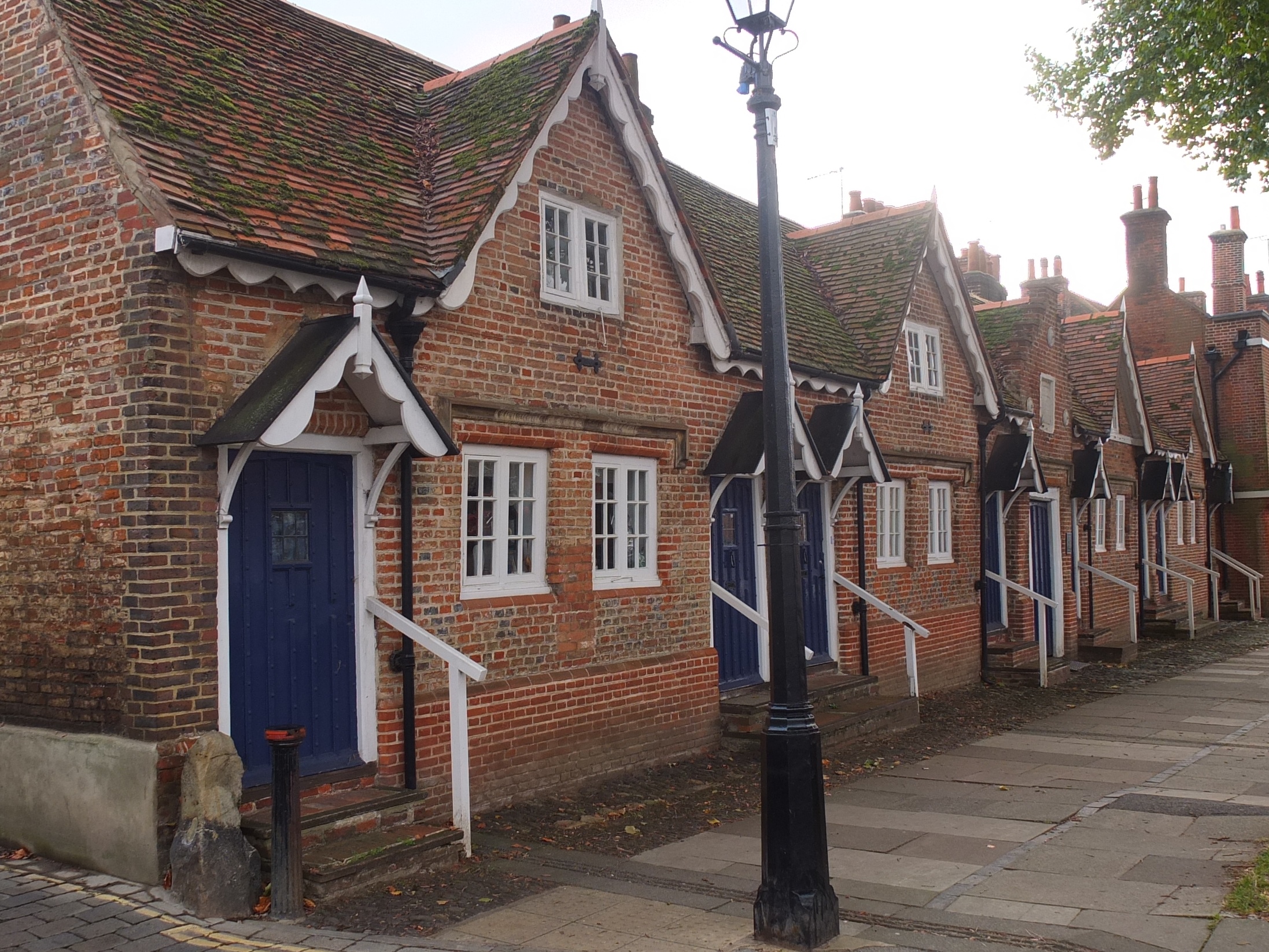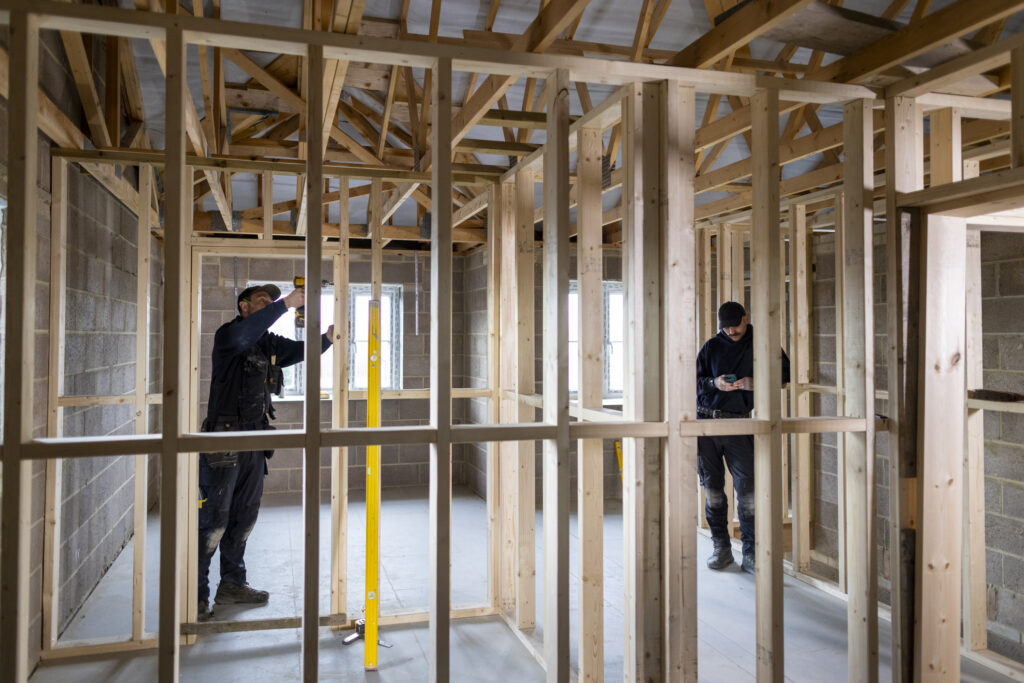
A Chair’s perspective: maintaining listed properties using loan finance
Andrew Windsor Almshouses has been providing homes for elderly people in need for 400 years. The Surrey-based charity currently houses 11 residents. A £250,000 loan from Charity Bank meant it was able to undertake urgent repairs to its 17th century properties.
Andrew Windsor Almshouses charity is celebrating its 400th anniversary this year. The oldest properties date back to 1620 and needed substantial repairs to their roofs. Chair Michael McAleenan explains why he turned to Charity Bank for a £250,000 loan for the work, and gives his guidance for other charities looking to finance repairs to older properties.
Is there still a need for almshouses in Farnham?
Well, we have 10 properties and a waiting list of 20 people wanting to move in. Unfortunately, a lot of people fall through the safety net provided by the State. They find themselves with nowhere to live as housing benefit only goes so far and everything is too expensive to rent. Most of our residents are widows. Something went wrong with their finances, or they were stay-at-home wives and their husband left or went bankrupt – that’s the sort of story we hear.
We’ve never had any difficulty filling the properties. It’s a prime location, a few hundred yards from the shops, and very well connected with public transport.
Are the buildings listed?
We’re Grade II* listed. After the early Norman castle, I believe they’re the most interesting buildings in Farnham – a good example of early 17th century construction. One of the original rafters that had to be replaced turned out to be 650 years old. We also discovered that a carpenter doing repair work in 1912 had written on an attic wall, “On this day in July 1912, National Insurance started.”
We’ve had archaeologists digging trenches in the grounds before. When the newer homes were built in the 1970s, human remains were unearthed. Luckily they were medieval!
Why did you need a loan from Charity Bank?
We knew the roofs needed doing and looked at all sorts of grants but just drew blanks everywhere. When we talked to professional fundraising bodies, they all said we had almost no chance of raising the kind of money we were talking about, as we were only doing a big repair and not increasing capacity.
We did create a JustGiving page, which raised about £6,000. I also printed some flyers and stuffed them in letterboxes locally which raised some £50,000.
We requested a loan of £320,000 from Charity Bank but didn’t have to draw it all down in the end. I requested more than the Quantity Surveyor’s indication of costs to allow for hidden or unexpected cost overruns. In the end though, our contractors finished on time and under budget.
Did you have any concerns about taking out a loan?
I used to work with a big medical charity in London, so I was used to borrowing large amounts of money to upgrade hospitals. I trained as a chartered accountant and my clerk is also a chartered accountant, so doing cash flows and stress tests was familiar work for us. We thought we had a good case, in that our income is very much assured and we had mortgage-free properties.
Why did you choose Charity Bank for your loan?
I thought they were ethically compatible with us. It was a case of charity talking to charity and understanding each other’s needs. The ethos of the organisation sat well with us and the initial discussions progressed well. The rate of interest was as good as we’d get elsewhere. Our Loans Manager, Mark Herbert, came to visit me at my house. I told him what I wanted, and we went forward from there.
How did you find the process of applying for the loan?
Delightfully straightforward! I did contact them about a couple of things and received an excellent letter from the Director of Lending. It’s gratifying to see comments being taken on-board and dealt with. It also helped that we haven’t had to draw down the full £320,000. In the end, we drew down £250,000, and are keeping £20,000 in reserve.
What guidance do you have for other charities thinking of taking out a loan?
Get your ducks in a row before you approach the bank. We had an issue whereby we’d decided to move to become a Charitable Incorporated Organisation (CIO) before we took out the loan so that the trustees didn’t have unlimited personal liability. We appointed a solicitor to deal with it, and matters were not dealt with in a timely manner. Transferring the title of the properties from the Charity Commission to the CIO took over two years. That delayed the transfer of the loan from Charity Bank to our account, and meant we couldn’t pay the contractors for two months.
The other thing I’d say to anyone contemplating doing work on an old building is to always allow for a margin of error. We were an unusual case in that we came in under budget.
What’s next for Andrew Windsor Almshouses?
The roof was phase one. We’d like to improve the 1980’s extensions at the back of the building to give residents a better sized kitchen. At the moment that’s a pipe dream though! We know the maximum monthly housing benefit in Farnham is over £600, while we charge our residents around £450. We are currently looking to see if we can move everyone who is on housing benefit up to the maximum level.
I look forward to the relationship with Charity Bank over the next 25 years. The loan enabled us to maintain the properties, which will continue to meet a need for people in difficult circumstances for many years to come.
Read more about Andrew Windsor Almshouses in our case study.
About Charity Bank
Charity Bank is the loans and savings bank owned by and committed to supporting the social sector. Since 2002, we have used our savers’ money to make more than 1380 loans totalling over £580m to housing, education, social care, community and other social purpose organisations.
Nothing in this article constitutes an invitation to engage in investment activity nor is it advice or a recommendation and professional advice should be taken before any course of action is pursued.


